See ‘unusual’ and ‘unique’ treasures found in woman’s 1,300-year-old grave in England
More than 1,300 years ago, a young woman was buried in England — along with various medieval treasures. Now, a year after discovering the ancient grave, experts have unearthed another “unique” artifact from the site.
Archaeologists discovered an “extremely delicate, large silver and gold cross backed with wood,” according to a Dec. 12 news release from the Museum of London Archaeology. The cross was described as an “unusual item,” and it was found in a grave dating between 630 and 670 A.D.
The cross was first identified with an X-ray image, experts said. Then, archaeologists conducted micro-excavations by removing “whole blocks of soil” from the site before examining them in a controlled lab.
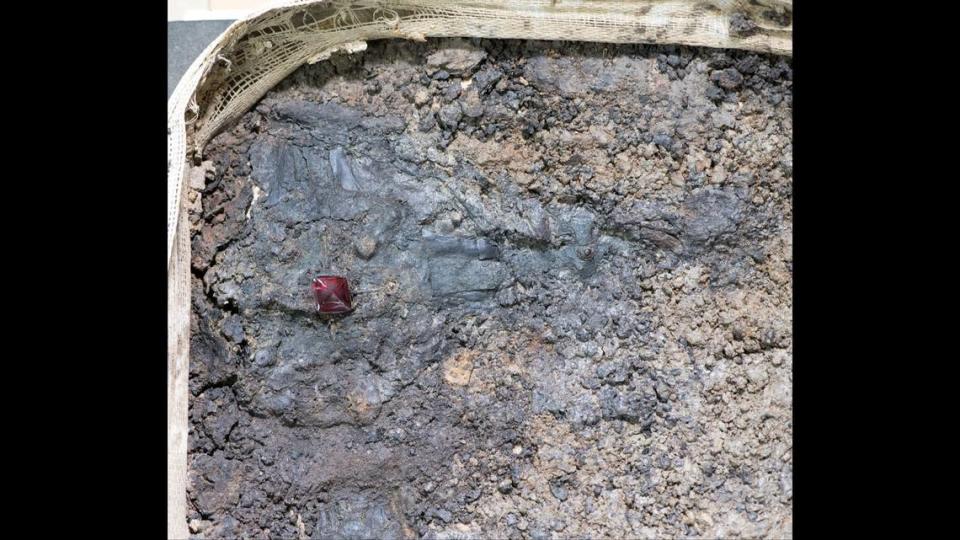
Lab excavations revealed the artifact, which is a central cross “decorated with a smaller gold cross,” according to officials. It has five garnets, one large and four smaller, and at the end of each arm is a small circular silver cross with garnet and gold at the center.
Experts said the cross resembles other crosses found in “high status female burials” from around the same time, indicating that the woman in the grave could have “held a very special position within the Christian community.”
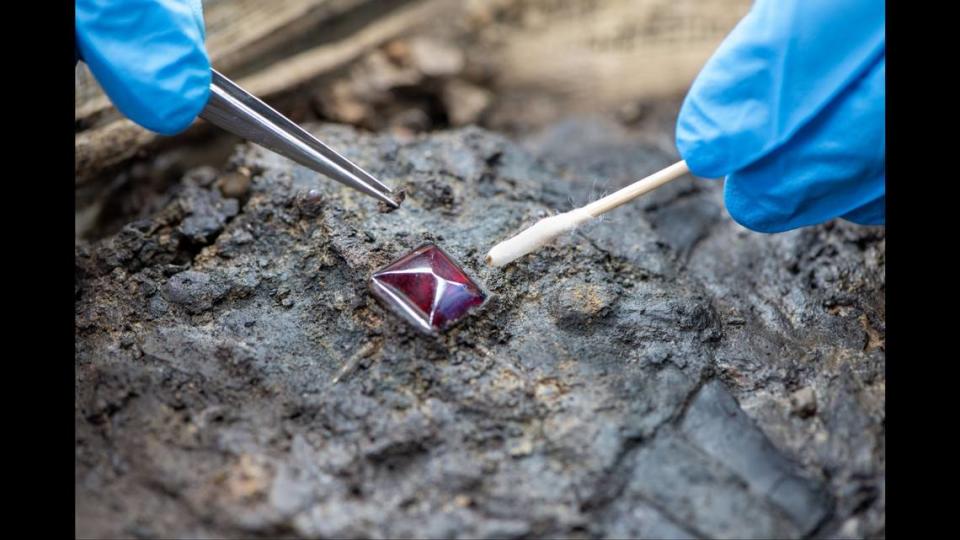
The cross is attached to wood, which is heavily corroded, archaeologists said. The team is hopeful that it can identify the type of wood.
When the grave — which experts described as “one of the most significant early-medieval female burials ever uncovered in Britain” — was first discovered in April 2022, archaeologists unearthed approximately 30 pendants and beads that once were part of a necklace.
Updated photos show the “exquisite” gold and gemstone necklace after it was cleaned.
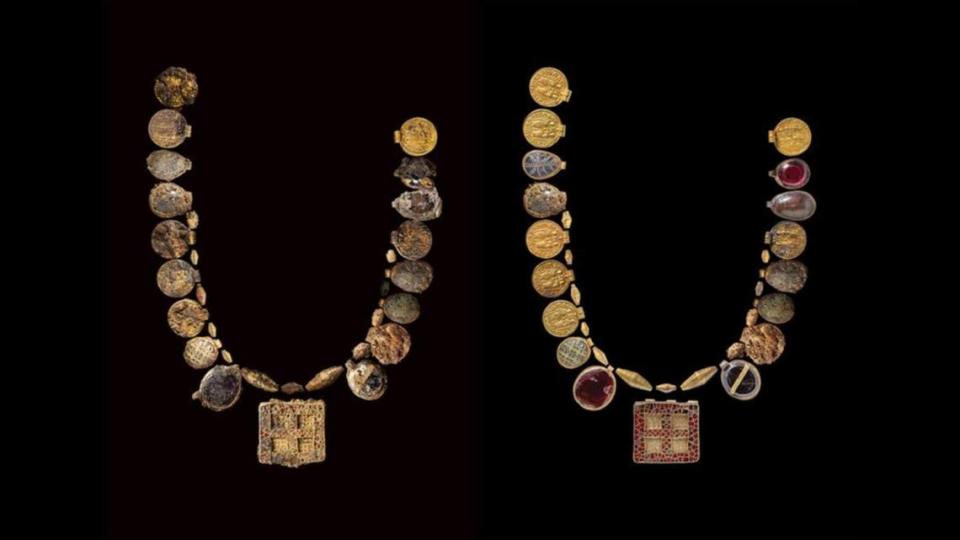
“Seeing the central gold and garnet clasp cleaned up is breath-taking,” Simon Mortimer, an archaeology consultant, said in the museum’s news release. “The key is now to reassemble all of the evidence that was buried on that day with this lady – to understand the full significance of who she was, where she was from and how she came to be here and why. Those answers will rewrite our understanding of early Medieval Northamptonshire.”
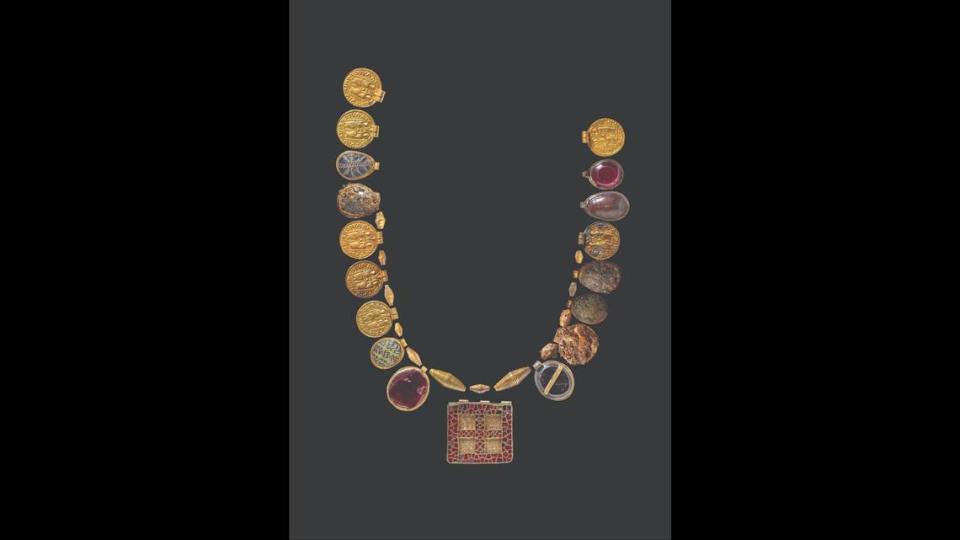
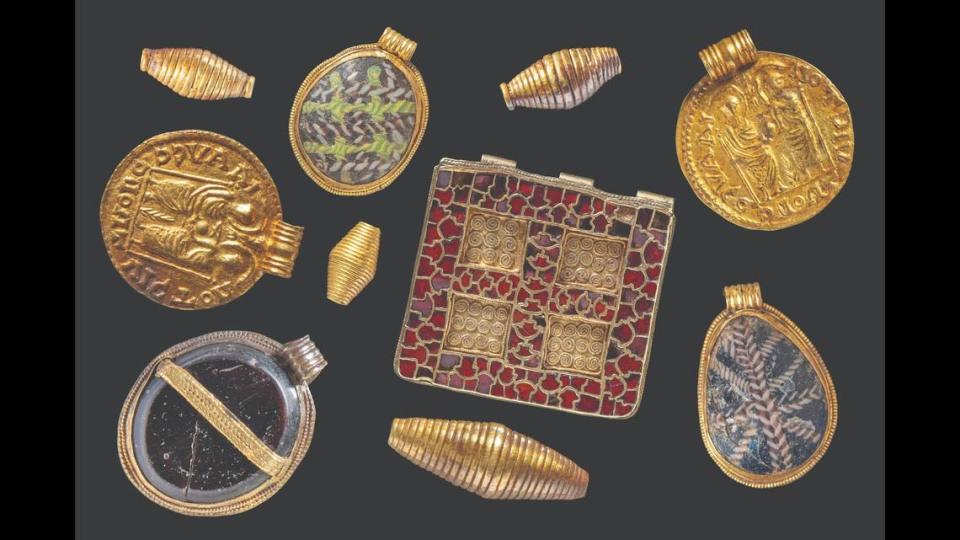
Archaeologists are now working to determine whether the coins on the necklace were original Roman coins or if they were imitations made as part of the necklace, they said.
The original excavation also revealed several teeth fragments, but officials said further investigations at the site have uncovered more bones, which will give more insight into the deceased.
Since last year, osteologists have discovered “the upper part of a femur, part of the pelvic bone, some vertebrae and part of a hand and wrist,” the museum said. The bones were preserved because they were covered by a “crushed copper dish placed within the grave.”
Early analysis of the skeletal remains indicate that the deceased was likely a young woman, but further tests will be conducted to determine more details, according to experts.
Harpole is in Northamptonshire, which is approximately 70 mile northwest of London.
Huge tomb — filled with treasures — sat untouched for more than 2,100 years. Until now
Ancient graves of possible married couple — one full of treasure — found in castle ruins
Trove of 900-year-old mummies — buried with ancient treasures — unearthed in Peru

